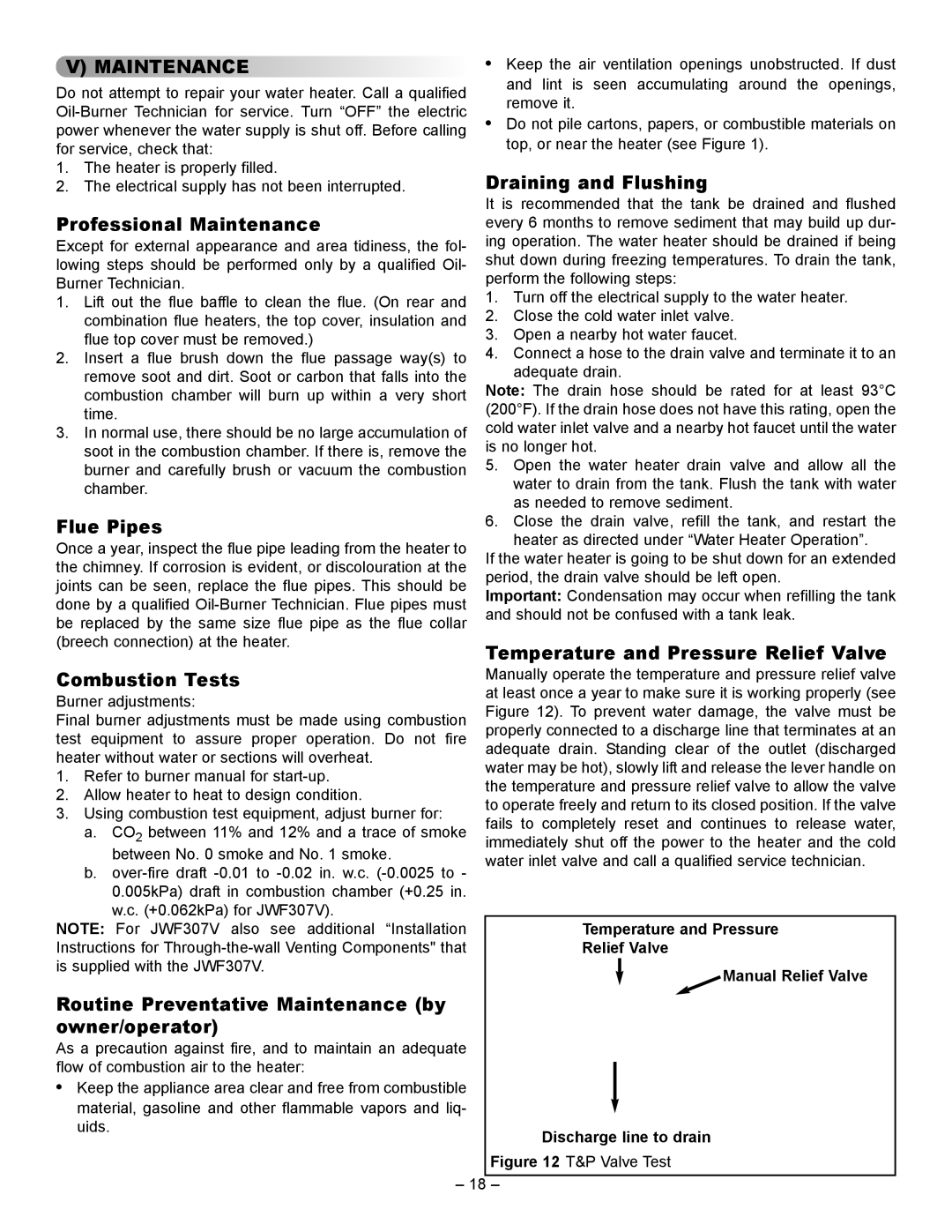JW327, JW517, JWF307V, JWF657, JWF507 specifications
Smith Cast Iron Boilers have established a strong reputation in the heating industry for their durable, efficient, and reliable products. Among their notable models are the JWF507, JW717, JWF657, JW327, and JW517. Each of these models incorporates advanced technologies and unique features tailored to meet various heating demands.The JWF507 is renowned for its exceptional thermal efficiency. This boiler utilizes a water-to-water heat exchanger, providing efficient heat transfer, which significantly reduces fuel consumption. Its robust cast iron construction ensures longevity, even in harsh conditions, while an oversized heat exchanger design enhances performance and reliability.
The JW717 model stands out with its ability to handle large-scale heating needs. This boiler features a multi-pass design that maximizes heat transfer and minimizes the chance of overheating. Additionally, it is equipped with an advanced control system that allows for precise temperature adjustments, ensuring optimal comfort in residential and commercial settings.
The JWF657 introduces a unique burner design, which improves combustion efficiency and reduces emissions. This model also features a built-in pump which enhances the system's circulation, helping to maintain consistent and comfortable heating throughout the space. With its energy-efficient attributes, the JWF657 is a top choice for environmentally-conscious consumers.
Next in line, the JW327 model is designed for versatility and adaptability. This boiler can easily be integrated into various heating systems, making it suitable for both retrofit and new construction projects. Its compact size allows for easy installation in tight spaces, while its high-efficiency rating contributes to lower energy bills.
Lastly, the JW517 model is known for its reliability and user-friendly design. This boiler is equipped with an intuitive control panel, making operation simple and straightforward. Its rugged cast iron construction is designed to withstand rigorous use, providing peace of mind for users who seek a dependable heating solution.
In summary, Smith Cast Iron Boilers offer a diverse portfolio with models like the JWF507, JW717, JWF657, JW327, and JW517, each boasting unique features and technologies. From high thermal efficiency and advanced combustion systems to user-friendly designs and rugged durability, these boilers are crafted to deliver optimal performance in various heating applications. Whether for residential or commercial use, these models exemplify the superior quality and innovation that Smith Cast Iron Boilers is known for.

